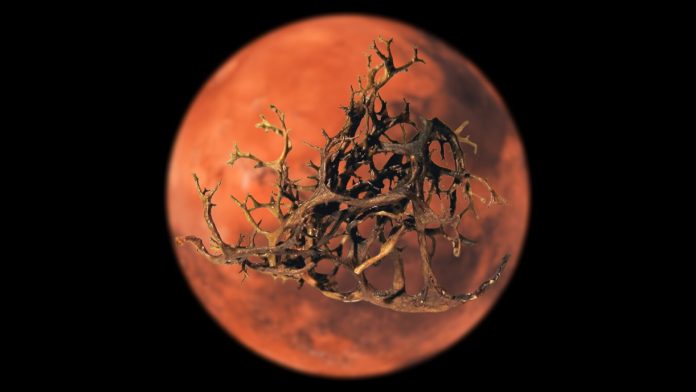
In a groundbreaking study, scientists have shown that certain types of lichens—organisms known for thriving in Earth’s harshest environments—can survive in conditions similar to those on the surface of Mars.
This exciting discovery brings us one step closer to understanding whether life could exist on the Red Planet.
Published in the journal IMA Fungus, the research is the first to show that lichens can remain alive and active even when exposed to high levels of ionizing radiation, extreme cold, and a thin carbon dioxide-rich atmosphere like that on Mars.
Even more impressive, the fungal part of the lichen continued carrying out metabolic processes, meaning it wasn’t just alive—it was functioning.
Lichens aren’t a single organism but a partnership between fungi and algae or cyanobacteria. These tough life forms are already known for their ability to live in extreme places like deserts and Antarctica.
In this study, researchers looked at two specific lichen species: Diploschistes muscorum and Cetraria aculeata.
They were chosen because of their different traits and placed in a vacuum chamber that mimicked Martian conditions—including radiation levels expected during a year of strong solar activity.
For five hours, the lichens were exposed to Mars-like pressure, cold temperatures, and harmful X-ray radiation. The results were surprising. One of the lichens, D. muscorum, managed to stay metabolically active, showing it could protect itself and continue functioning even in such extreme conditions.
Lead author Kaja Skubała explained, “Our study is the first to show that the fungal partner in lichen symbiosis can keep its metabolism going while under Mars-like conditions. We found that D. muscorum could not only survive but also activate its defense systems.”
This research challenges the common belief that Mars is simply too harsh to support life. It suggests that life forms like lichens might one day be used in Mars missions, either to study survival strategies or to support future human exploration. The study also gives scientists new insights into how hydrated life forms respond to one of Mars’ biggest threats—radiation.
The team recommends further research to see how lichens would cope with long-term exposure to Martian conditions. They also hope to eventually test how these organisms behave in real Martian environments, perhaps on future space missions.
Source: Pensoft Publishers.



